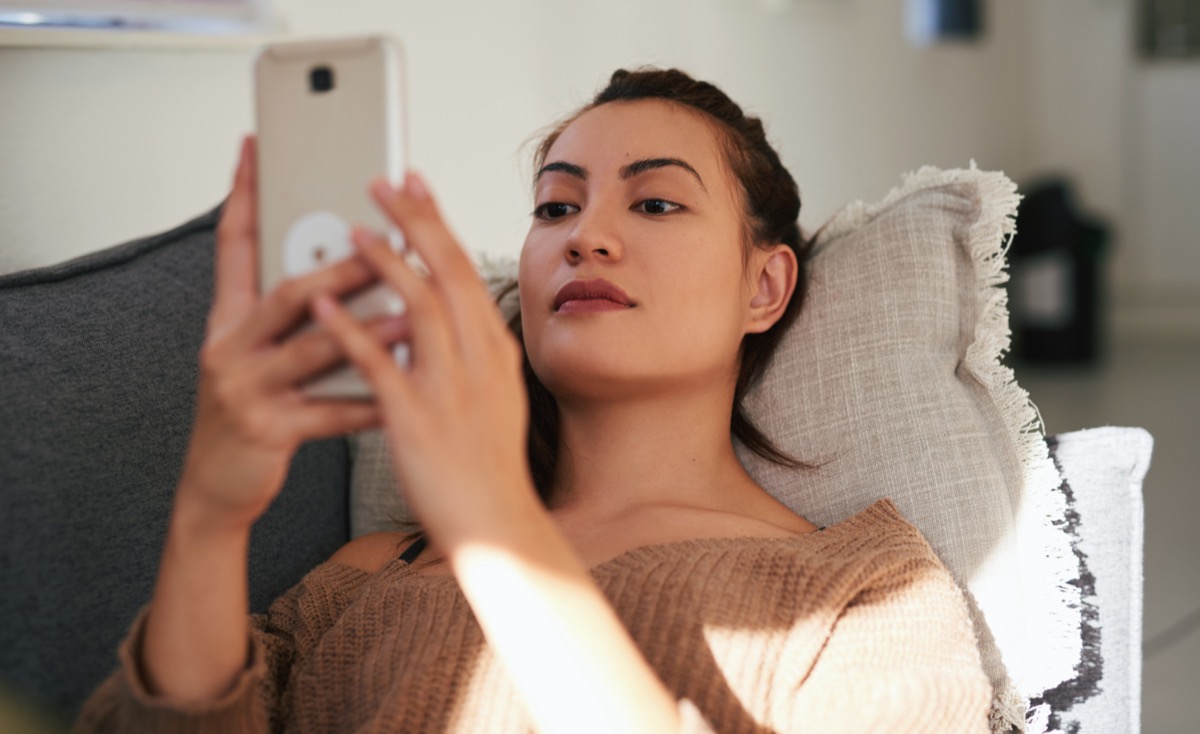How "Instagram Therapy" Can Work for Mental Health

Women make up the majority of people living with mood disorders in Canada. However, treatments and resources that are adapted to their needs are still lacking. Looking for ways to feel better, many women are turning to social media platforms like Instagram.
To make sense of the phenomenon called "Instagram therapy," I interviewed more than 20 women in 2020 who use Instagram for mental health care. I found that women turn to the image-sharing platform to counter the lack of available resources. Instagram allows them to tackle issues related to their gender identity, connect to others with similar experiences and, ultimately, feel less alone.
Even though awareness about mental health has increased, especially during the pandemic, gender-based stigmas, biases and expectations continue to affect women's well-being at a growing rate.
Hysterical histories
These issues date back to 19th-century psychiatry. Women were portrayed as hysterical or "crazy," and over-represented among the mentally ill, entertaining the idea that insanity is inherent to women's nature.
Consequently, women are not only more susceptible to being labelled as mad, but traditional psychology also tends to generalize their experiences, not taking into consideration that gender is lived differently depending on race, sexual identity and other social determinants. Today, even though years of research have challenged the association between women and madness, gender norms continue to affect women's well-being and accessibility to adequate care.
Validation and community
For the women I interviewed, Instagram acts as a tool to tackle these norms as well as seek validation and community. While Instagram therapy has been called out as dangerous, my research reveals that Instagram actually helps women progress in their recovery because they can access information and make connections that are not possible otherwise.
Cécile, a philosophy student, decided to seek help for her eating disorder right before the pandemic. When the lockdown started, she recalls her Instagram feed being full of memes about weight gain during quarantine, something that was particularly triggering. Instead of leaving Instagram, one of the few places where she could still connect with people, she decided to start following hashtags like #bodypositivemovement and share her recovery journey in her Instagram stories.
Cécile uses her stories to change the conversation around dieting and add links to existing resources. For her, doing this work really "helps women to feel less alone, it creates a feeling of solidarity."
Émilie, a biracial woman living with generalized anxiety, doesn't share her personal journey on Instagram, but actively uses the content of accounts such as @browngirltherapy and @letterstoblackwomen in her recovery process. Her mental health, she tells me during our interview, cannot be dissociated from the everyday racism she experiences as a Black woman — the content she follows on Instagram allows her to address this dimension.
"It provides validation for things that are not necessarily addressed in therapy or that I feel I can't talk about with the people around me."
For example, it is thanks to these accounts that Émilie became aware of many micro-aggressions she was experiencing but didn't know had an effect on her well-being.
Challenging the gender gap
But to think that Instagram could challenge the gender gap in mental health is not what automatically comes to mind when mental illness and social media are coupled together. Indeed, social media researchers have demonstrated that Instagram can be empowering, but also harmful in perpetuating unrealistic gender expectations.
Instagram's algorithm structures our networked interactions in ways that push forward certain content and shadow others, encouraging standardized definitions of femininity and self care to endure.
For example, Instagram promotes esthetically pleasing models of recovery such as bubble baths and scented candles that continue to put the responsibility of well-being in the hands of women instead of social infrastructures. Women are therefore not only compelled to use Instagram to address the lack of mental health resources, but also for the self-realization, empowerment and transformation that it promises.
Reframing the conversation
But however diverse social media's impact on mental health can be, my participants' stories shed light on the necessity to reframe the discourse around social media and mental health. While there is a tendency to focus on how Instagram aggravates women's mental health, there is a pressing need to acknowledge that women also turn to the platform to consult information related to their health and find recognition.
This is especially important because Instagram currently polices mental illness-related content in ways that are harmful to these communities. We must recognize that Instagram is not always bad for mental health in order to hold the app accountable for further stigmatizing women. Actually, it should be the responsibility of Instagram to assure that women can continue to create and access vital information and communities without being censored.
Finally, content posted online represents an important body of knowledge that must be taken seriously if we ever want to create resources that are better tailored to women's needs. Attending to the complexity of women's Instagram use allows us to better understand the limits and possibilities of digital care when our health is increasingly tied to mobile apps.
The government of Canada is developing a virtual care platform to help Canadians navigate mental health issues. The digital tools will be designed to help users connect to mental health providers and find reliable information while reducing the pressure on the health-care system.
Looking at how women are using available platforms and networks like Instagram can help adapt these technologies to their needs and potentially reduce the gender gap.![]()
Fanny Gravel-Patry, Ph.D. Candidate and Public Scholar, Communication Studies, Concordia University
This article is republished from The Conversation under a Creative Commons license. Read the original article.








